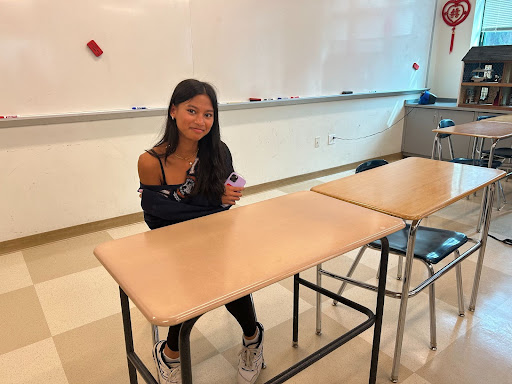
It’s that time of year again. It’s that time of year when summer slowly transforms into fall, the temperature is beginning to drop and you gradually start to wear more layers… except that the cold hits you like a truck because this year, Staples’ unpredictable temperatures have struck yet again.
When I entered my math classroom a few weeks ago, I immediately felt the change in temperature from the hallway, a blast of cold air hitting my face. While I had just been laughing warmly with my friends in the hallway, I was now fidgeting and shivering in a sad attempt to stop freezing; even worse, as I went on throughout my day, it seemed like almost all of my classes were much too cold to focus. I can’t sit and learn comfortably in any of my classes because I’m too busy trying to stay warm, and the first thought that pops into my head when I enter a classroom is “Why is it so cold?”
While some people may think this is an easy fix by just wearing more layers to school, I feel that this is an issue that needs to be addressed because Staples has a history of conflicting temperatures. Every room is a different temperature, so I never know what to expect when I enter a certain classroom, and I can’t just prepare a separate outfit for each class I have that day.
The fieldhouse is an absolute hotbox, and while I would probably be more comfortable in a t-shirt and shorts during my gym class, it would leave me freezing in my chemistry class. But if I brought an extra hoodie to stay warm, I’d have to constantly take it on and off and carry it around with me throughout the day, which is extremely annoying with my already heavy backpack.
A study performed at Westview High School in Oregon found that when temperatures are not optimal, the body continuously interrupts the brain and signals it to readjust to the temperature, causing students to lose focus. The study conducted tests on ninth graders in different classrooms with differing temperatures to see how their performances would vary, giving them all the same basic math test. The study revealed that at 61 degrees Fahrenheit, students averaged a score of 76%; at 72 degrees Fahrenheit, students averaged a score of 90%; and at 81 degrees Fahrenheit, students averaged a score of 72%. It is clear that whether hot or cold, uncomfortable temperatures affect students’ learning negatively.
Obviously, it’s unreasonable for every classroom to have a temperature of exactly 72 degrees, but it’s not impossible for each classroom to have consistent temperatures that don’t make students too uncomfortable. In order for students to perform their best, it’s vital that small things like temperature don’t hold them back.














































